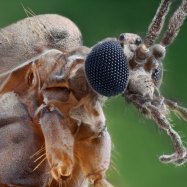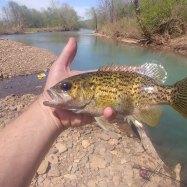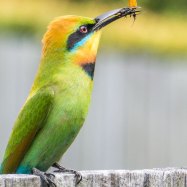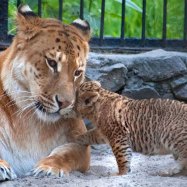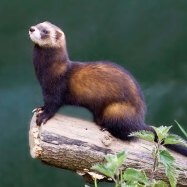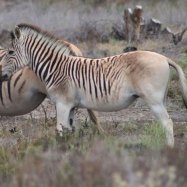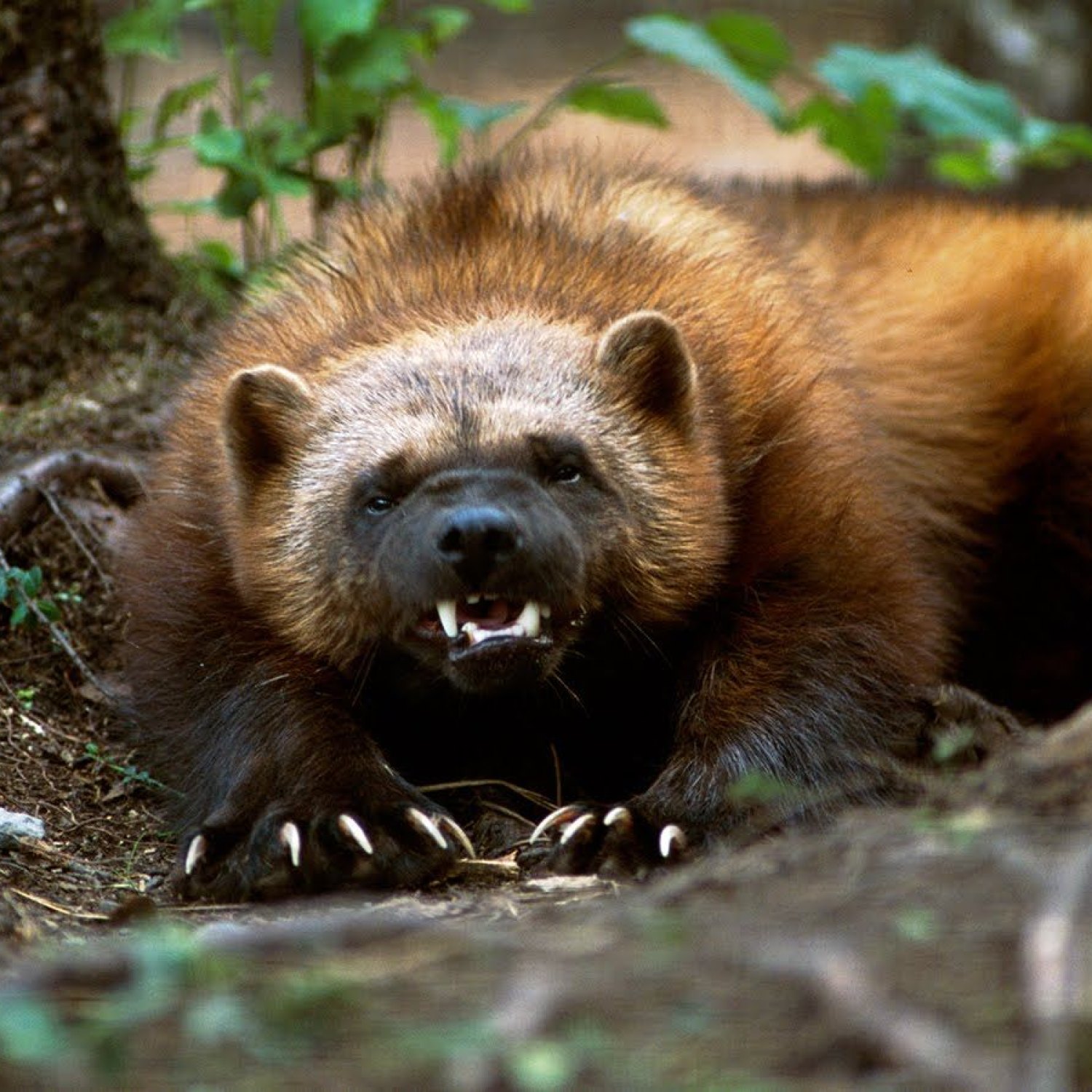
Wolverine
25-42 inches (excluding the tail)
The wolverine, found in northern regions, is known for its muscular and stocky body. It belongs to the Mustelidae family and can grow 25-42 inches (excluding the tail). Despite its small size, this animal is a fierce predator and is often referred to as the skunk bear. With sharp claws and powerful jaws, the wolverine is a formidable addition to the animal kingdom. Its name may come from the Old High German word wargelon, meaning little wolf. #Wolverine #Mustelidae #Predator
Animal Details Summary:
Common Name: Wolverine
Kingdom: Animalia
Habitat: Forests, tundra, and mountains
The Untamed Reign of the Wolverine
In the forests, tundra, and mountains of North America, Europe, and Asia, there roams an elusive and fierce predator – the wolverine. Scientifically known as Gulo gulo, this animal is commonly referred to as the wolverine, a name derived from the Old English word "wulfere," meaning "wolf-like." While it may be tempting to assume that this animal is a wolf, it is, in fact, not related to wolves at all. In fact, it belongs to the same family as weasels, badgers, and otters – the Mustelidae family Wolverine. However, don't let its size fool you – despite its relatively small stature, the wolverine is a formidable predator, known for its strength, agility, and ferocity.The Classification of the Wolverine
The wolverine belongs to the kingdom Animalia, which includes all living organisms that are classified as animals. It further falls under the phylum Chordata, which includes all animals with a spinal cord. Within the class Mammalia, the wolverine is classified as a carnivorous mammal under the order Carnivora, which includes other meat-eating animals such as bears, cats, and dogs. Its scientific name, Gulo gulo, is derived from the Latin word "gulosus," which means glutton.The Habitat of the Wolverine
The wolverine is a nomadic animal that can be found in a variety of habitats, including forests, tundra, and mountains. They are opportunistic animals that can adapt to different environments, making them highly adaptable and elusive. A wolverine's territory can span up to 200 square miles, making it difficult to study and track their movements. They are most commonly found in northern regions, such as Canada, where they originated White Tailed Eagle.The Feeding Behavior of the Wolverine
As a member of the Carnivora order, wolverines are primarily carnivorous animals, meaning they feed on meat. Their diet consists of a variety of animals, from large mammals like caribou and moose to smaller prey like rodents, birds, and fish. They are also known to scavenge on carrion and are even capable of taking down larger animals like deer and reindeer, making them one of the fiercest predators in their territory. Due to their strong jaw muscles, wolverines are also able to eat bones and frozen meat, making them even more efficient hunters in their harsh habitat.The Geographical Distribution of the Wolverine
Wolverines are found in the northern regions of the world, with their territory covering North America, Europe, and Asia. They have been spotted in countries such as Canada, Alaska, Norway, Russia, and Japan. However, due to their elusive nature and nomadic behavior, it is challenging to estimate their population accurately. Some experts believe that there are only a few thousand wolverines left in the wild, while others suggest a population of around 300,000. Nonetheless, these animals are considered a "near threatened" species, as they face threats such as habitat loss and poaching.The Physical Characteristics of the Wolverine
At first glance, the wolverine may seem like a small, harmless animal. However, their stocky and muscular body makes them formidable predators. They measure between 25-42 inches in length, not including their bushy tail, and weigh between 24-40 pounds. Their thick fur is dark brown, and they often have light tan or yellowish facial markings, giving them a distinct and unmistakable appearance. These markings are unique to each individual wolverine and can be used to identify them. Their fur also serves as insulation against the harsh and cold climates of their habitat.The Behavior and Reproduction of the Wolverine
As solitary animals, wolverines are often on their own, except during the breeding season, which takes place between May and August. During this time, male and female wolverines will come together to mate, after which, the male leaves to find a new mate, while the female takes care of the cubs. Female wolverines typically give birth to two to three cubs, who are born blind and helpless and rely on their mother for survival. These cubs will stay with their mother for up to two years before venturing out on their own.Wolverines are known to be nocturnal animals, meaning they are most active at night. However, due to their elusive nature, little is known about their behavior in the wild. They are territorial creatures and have been observed marking their territory with urine and anal gland secretions. They are also known to communicate with each other through a series of vocalizations and body postures.
The Wolverine's Role in the Ecosystem
Despite their small size, wolverines play a significant role in their ecosystem as top predators. They help to regulate prey populations, ensuring the balance of the food chain. They are also critical in the decomposition process, as they scavenge on carrion, aiding in the recycling of nutrients back into the environment. The wolverine's elusive nature also makes them indicators of the overall health of their habitat. If wolverines are present in an area, it is a sign that the ecosystem is thriving. Therefore, preserving the wolverine's habitat is crucial to maintaining the balance of their ecosystem.The Relationship Between Humans and Wolverines
The wolverine has long been an animal that is deeply ingrained in human culture. Native American tribes often revered the wolverine, believing it had supernatural powers and strength. In the modern era, wolverines have become a symbol of toughness, tenacity, and ferocity, making appearances in popular culture, such as sports teams, superheroes, and even a popular comic book character.However, the relationship between humans and wolverines has not always been positive. Due to their fierce nature and potential threat to livestock, wolverines have been hunted by humans for their fur, leading to a significant decline in their population. While hunting of wolverines is now illegal in most countries, they still face other threats, such as habitat loss and fragmentation due to human activities.
The Conservation Efforts for the Wolverine
Efforts are being made to protect the wolverine and its habitat. However, due to its elusive nature and nomadic behavior, accurately assessing their population and implementing conservation efforts is a challenging task. Organizations such as the Wolverine Foundation and the Wolverine Project are dedicated to studying and protecting this magnificent animal. They also work towards educating the public about the importance of preserving the wolverine's habitat and encouraging responsible and sustainable practices to minimize human impact on their territory.In Conclusion
The wolverine may be small in size, but it is a powerful and resilient animal that plays a significant role in its ecosystem. Its ability to adapt to different environments, strength, and ferocity has earned it a reputation as a formidable predator among humans. However, the wolverine's elusive nature and threats to its habitat have made it a vulnerable species, highlighting the need for conservation efforts to protect this captivating animal.As we continue to learn more about the wolverine and its habits, we must also recognize the importance of coexisting with these animals and preserving their habitat for future generations to come. The wolverine's reign may be untamed, but it is up to us to ensure that it remains a thriving and vital part of our ecosystem.

Wolverine
Animal Details Wolverine - Scientific Name: Gulo gulo
- Category: Animals W
- Scientific Name: Gulo gulo
- Common Name: Wolverine
- Kingdom: Animalia
- Phylum: Chordata
- Class: Mammalia
- Order: Carnivora
- Family: Mustelidae
- Habitat: Forests, tundra, and mountains
- Feeding Method: Carnivorous
- Geographical Distribution: North America, Europe, and Asia
- Country of Origin: Canada
- Location: Northern regions
- Animal Coloration: Dark brown with light tan or yellowish facial markings
- Body Shape: Stocky and muscular
- Length: 25-42 inches (excluding the tail)
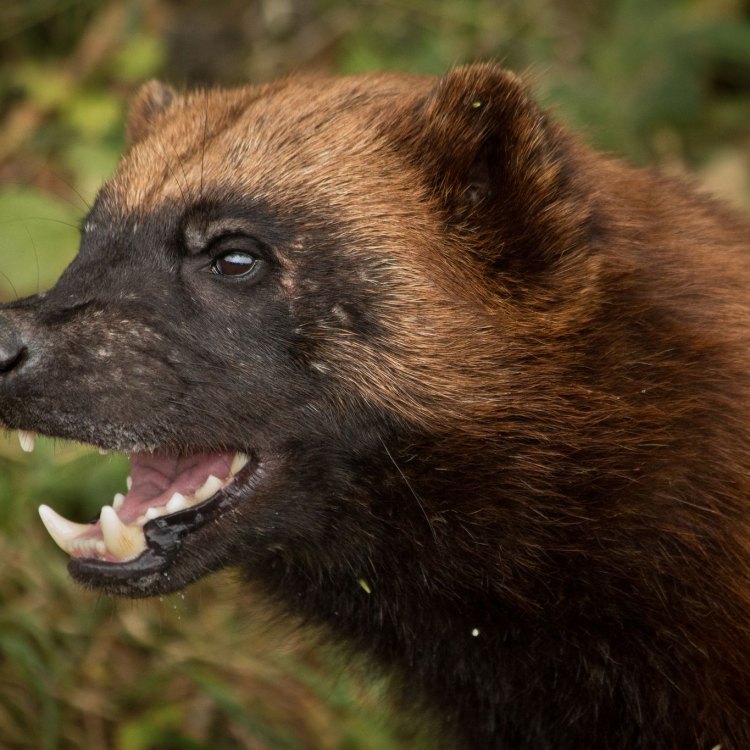
Wolverine
- Adult Size: 30-40 pounds
- Average Lifespan: 8-13 years
- Reproduction: Sexual
- Reproductive Behavior: Polygamous
- Sound or Call: Growls, barks, and hisses
- Migration Pattern: Non-migratory
- Social Groups: Solitary
- Behavior: Aggressive and territorial
- Threats: Habitat loss and fragmentation, climate change, and hunting
- Conservation Status: Near Threatened
- Impact on Ecosystem: Indicator species for ecosystem health
- Human Use: Fur trapping
- Distinctive Features: Powerful jaws, sharp claws, and a skunk-like scent gland
- Interesting Facts: Known for their strength and aggressiveness; they have been known to take down prey much larger than themselves
- Predator: No natural predators
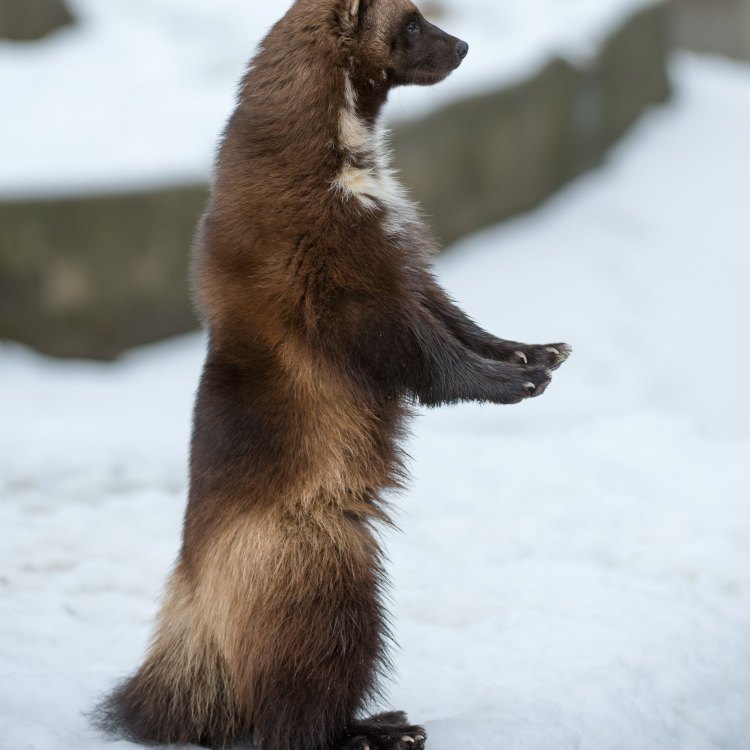
Gulo gulo
The Mighty and Mysterious Wolverine: A Ferocious Solitary Predator
Wolverines have long been a symbol of strength and ferocity in popular culture. Whether it's their depiction in comic books or their presence in the wild, these creatures have captivated our imaginations with their unique features and complex behavior. But how much do we really know about these elusive creatures? Let's take a journey into the wild world of the wolverine to discover its fascinating characteristics and its crucial role in maintaining the health of ecosystems.Found primarily in the northern regions of the world, wolverines are the largest land-dwelling species in the Mustelidae family, which includes weasels, otters, and badgers PeaceOfAnimals.Com. They are known for their thick, shaggy fur, with shades ranging from dark brown to almost black, giving them a rugged and intimidating appearance. Spanning a length of 3-3.5 feet and weighing between 30-40 pounds, wolverines are considered to be medium-sized carnivores.
On average, wolverines live for 8-13 years in the wild. They reach sexual maturity at 2-3 years and can give birth to up to 6 kits at a time. Wolverines reproduce sexually, with females being polygamous, mating with multiple males during the breeding season. These solitary creatures, however, only come together for a short period during the mating season and are otherwise known to be fiercely territorial.
Speaking of territoriality, wolverines are known for their aggressive behavior, especially when it comes to defending their territory or searching for food. They are not known to have any natural predators, partly due to their intimidating size and partly because they possess a unique ability – they can emit a strong skunk-like odor from scent glands located near their tail Woolly Rhinoceros. This pungent smell can act as a deterrent to potential predators, making wolverines virtually invincible in the wild.
Hunting is a crucial part of a wolverine's behavior. They are opportunistic predators, and their diet mainly consists of small animals such as rodents, hares, and birds. However, they are also known to take down prey much larger than themselves, such as deer, elk, and moose. This impressive strength and ferocity have given wolverines a reputation as one of the most formidable predators in the animal kingdom.
Apart from their physical prowess, wolverines are also known for their distinct vocalizations. They are highly vocal creatures, using a variety of sounds to communicate with other wolverines and warn potential predators. Their repertoire of sounds includes growls, barks, hisses, and even high-pitched screams. These vocalizations vary depending on the situation, with growls and hisses being used to communicate aggression and barks and screams used as warning signals.
Despite their aggressive and solitary nature, wolverines play a vital role in maintaining the health of their ecosystems. Their diet primarily consists of small mammals, which makes them an important predator for controlling their populations. This role as a predator makes wolverines an indicator species for ecosystem health. In simple terms, if the wolverine population is thriving, it's a sign that the ecosystem is healthy and balanced.
Unfortunately, wolverines face several threats to their survival. Habitat loss and fragmentation are one of the major concerns for the species, with human activities such as logging, mining, and urbanization encroaching into their territory. This loss of habitat also leads to a decline in their primary prey species, making it challenging for wolverines to find food. Climate change is another issue affecting wolverines, as it reduces the availability of suitable habitat and disrupts their breeding cycles.
In addition to these human-driven threats, wolverines also face the danger of fur trapping. Wolverines have long been coveted for their thick and luxurious fur, and despite efforts to regulate trapping, it still continues in some parts of the world. This practice not only harms wolverine populations but also disrupts their crucial role in maintaining healthy ecosystems.
As a result of these threats, the conservation status of wolverines is listed as 'near threatened' on the IUCN Red List. This designation acknowledges the need for conservation efforts to ensure the survival of this magnificent species. Several organizations are working towards protecting wolverines and their habitat, including the Wolverine Foundation and the Wolverine Watchers Society.
In conclusion, wolverines may be elusive and solitary creatures, but they are an essential part of our natural world. With their powerful jaws, sharp claws, and unique scent gland, they have become a symbol of strength and ferocity. But beyond their impressive physical features and aggressive behavior, wolverines also play a crucial role in maintaining the health and balance of their ecosystems. It's up to us to ensure that these mighty and mysterious creatures continue to thrive in the wild and contribute to the diversity of our planet.
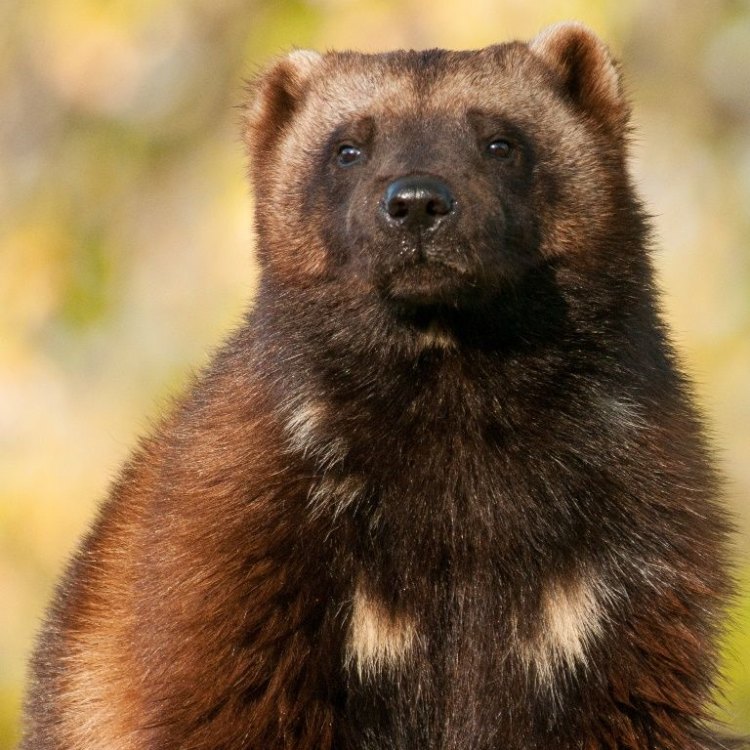
The Untamed Reign of the Wolverine
Disclaimer: The content provided is for informational purposes only. We cannot guarantee the accuracy of the information on this page 100%. All information provided here may change without prior notice.

